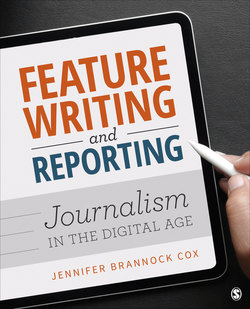Читать книгу Feature Writing and Reporting - Jennifer Brannock Cox - Страница 7
На сайте Литреса книга снята с продажи.
Incorporating the Past Into the Future
ОглавлениеThe concept of journalism is changing rapidly. Audiences will not be told what news to consume and how they should get it. They seek information on their own, Googling key words, scanning news sites for appealing content and subscribing to online newsletters packed with niche content appealing specifically to their interests. They also consume news passively, scrolling through social media and responding to push notifications containing breaking news on their phones.
These changes in news consumption have also altered what it means to be a journalist. Students who leave college with journalistic ambitions may not follow a traditional path leading them to work for a newspaper or magazine. Instead, many parlay their skills into other types of storytelling ventures, including online niche publications, social media management, nonprofit work and many other opportunities. Journalism as we have known it has transformed, and the way it is taught needs to evolve too.
The goal of this book is not to abandon the past. Rather, it is to incorporate tried-and-true storytelling techniques into new strategies for telling stories in the Digital Age. Emerging storytellers need both time-tested feature reporting and writing skills and knowledge of more immersive and interactive techniques to help them navigate a variety of news-sharing platforms. That is why this book goes beyond basic feature writing and reporting components covered in other texts to highlight journalism skills relevant to storytellers of all types. In these chapters, you will learn traditional methods for finding story ideas, writing compelling features, interviewing and practicing journalism ethics. But you will view them as well through the refractive lens of the Digital Age. You will explore the state of the news industry to better understand the incredible impact digital technologies have had on how audiences get their news and the ways in which journalists report it. Along the way, you will hear from professionals in the field and gather helpful tips on how to tell dynamic feature stories in this modern era.
This book discusses how to engage communities in your reporting, incorporate your own experiences into your work and focus stories more on solutions than on problems—all in ways that appeal to Digital Age audiences. And because there is no such thing as being “just a print reporter” anymore, you will learn best practices for storytelling on multimedia platforms, including traditional technologies (cameras, audio, video) and newer mobile applications.
